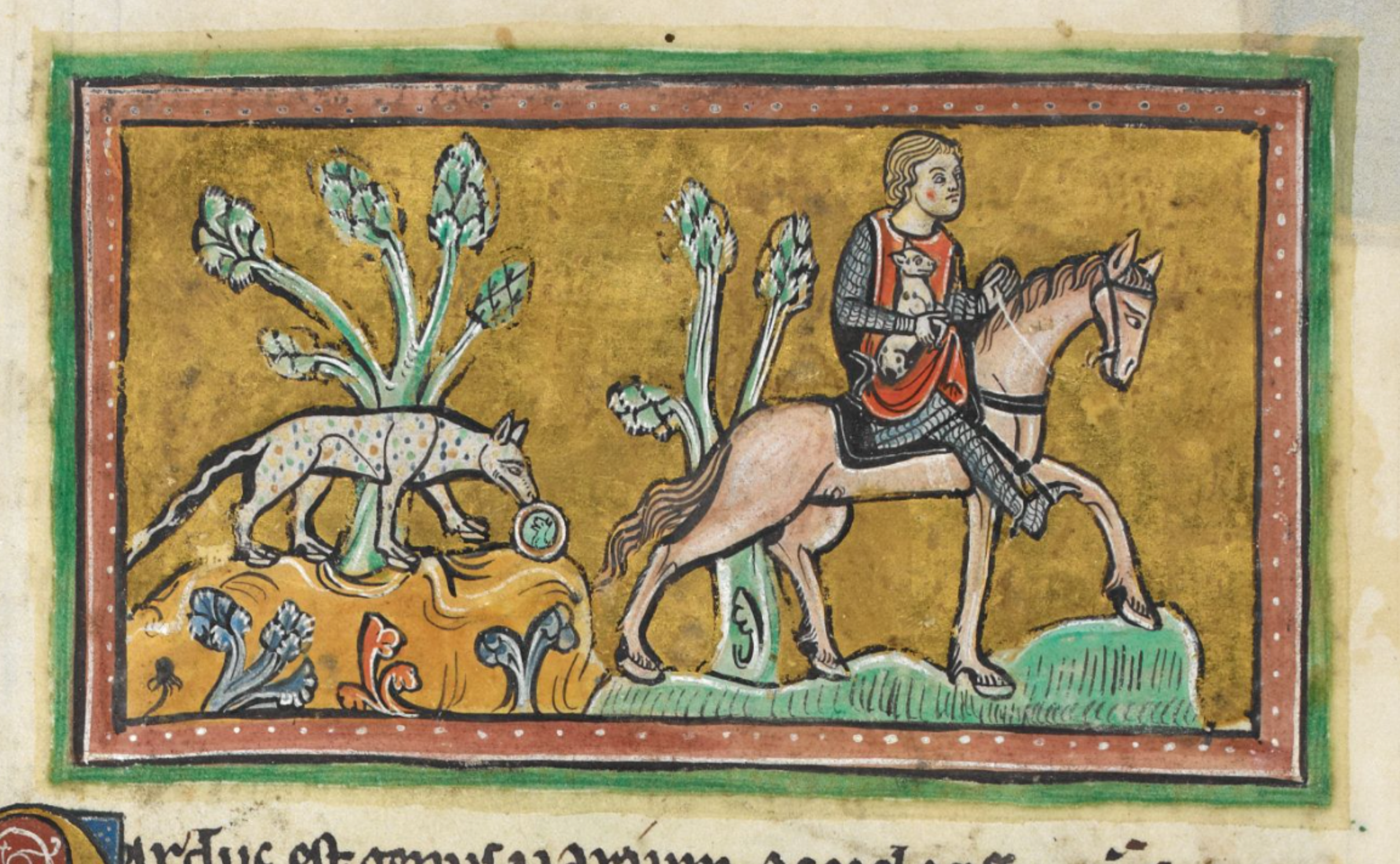Tiger, Rochester Bestiary, c.1230
Although tigers were not native species in the regions where Christianity originate and spread, the symbolism associated with them may have been influenced by Eastern traditions.
Tigers might be associated with virtues such as strength of character, resilience and the ability to overcome challenges as well as solicitude of a mother towards her offspring and willingness to risk everything to save them.
In Latin literature, tigers are mentioned in relation to Hircania, a land between Iran and Turkmenistan where tigers abounded there apparently in the Classical Age. Even Virgil, in the Aeneid (IV.365-7), mentions the tigers of Hircania and writes about Dido accusing Aeneas:
“Nec tibi diva parens generis nec Dardanus auctor,
perfide, sed duris genuit te cautibus horrens
Caucasus Hyrcanaeque admorunt ubera tigres. (IV.365-7)”
“You had neither a goddess for a parent, nor was Dardanus the author of your race, faithless one, but the horrible Caucasus produced you from hard crags, and Hyrcanian tigers nursed you."
bestia variis distincta maculis. virtute et veloci-
tate mirabilis. Ex cuius nomine flumen tigris appel-
latur. quod est rapidissimus omnium fluviorum. Has ma-
gis hircana gignit. Tigris vero ubi vacuum rapte sobolis
repperit cubile. ilico raptoris vestigiis insistit. At ille
quamvis equo vectus fugaci; videns tamen velocitate fere se pos-
se preverti; nec ullum evadendi suppetere sibi posse subsi-
dium; terna huiusmodi fraude molitur. Ubi se contigu-
um viderit; speram2 de vitro proicit. At illa ymagi-
ne sua illuditur. et sobolem putat. revocat inpetum;
colligere fetum desiderans. Rursus inani specie re-
tenta; totis se ad comprehendum equitem viribus fun-
dit. Et iracundie stimulo velociter fugienti iminet. Iterum ille spere obiectu sequem retardat. nec tamen
sedulitatem matris memoria fraudis excludit. Cassam
versat ymaginem. et quasi lactura fetum residet. Sicque pietatis sue studio decepta; et vindictam amit-
tit et prolem;
The tiger is called so because of her fast running. In fact, the Persians, the Greeks and the Medes3 nicknamed her arrow. It is indeed a beast recognisable by her various spots, which possesses wonderful strength and swiftness. From her name, the river Tigris derives, owing to its being the swiftest of all rivers. The land of Hircania4 is the birthplace of more of these beasts. When the tiger has discovered her lair empty after her cub has been stolen, she immediately gets on the thief’s trail. When the thief realises that the beast outruns his horse, however fast such horse may run, and sees that no means of escape is available, he resorts to deception thrice. When he sees that the beast is approaching, he throws down a glass sphere; then the tiger is deceived by her own image and thinks it is her cub; therefore, she withdraws her attack, desiring to gather the cub. Restrained by the false image of the cub, she tries with all her might to catch the horseman. Carried away by her anger, the tiger quickly chases threateningly the fleeing horseman. The horseman slackens the chase by throwing down the sphere a second time; nevertheless, the memory of the deception does not banish the mother’s solicitude. She turns the deceptive image over and sits down with the intention of suckling her cub. Thus, deceived by her own affection, she loses both her revenge and her cub.
Further Reading
David Badke, The Bestiary Blog: Animals in the Middle Ages, Tiger, November 6 2023, https://bestiary.ca/beasts/beast131.htm
Josh Goldenberg (BA 2012) and Matt Shanahan (BA 2014, Logeion, November 2022, https://logeion.uchicago.edu/
Castiglioni, L. and Mariotti, S. (1996). Vocabolario della Lingua Latina: Latino-Italiano Italiano-Latino. Terza Edizione. Loescher Torino
Matthews, J. and Matthews C., (2010), The Element Encyclopedia of Magical Creatures, HarperCollins UK, London
Curley, M. J., Physiologus: A Medieval Book of Nature Lore (University of Chicago edition 2009)
Rackham, H., M.A., Pliny Natural History Volume III, Libri VIII-XI (London: William Heinemann Ltd, 1949)
Collins, A. H., M.A., Symbolism of Animals and Birds (New York: McBride, Nast & Company, 1913)
Henderson, C., The Book of Barely Imagined Beings (London: University of Chicago Press, 2013)
White, T. H., The Bestiary: A Book of Beasts (New York: G.P Putnam’s Sons, 1960)
Barney, S. A., Lewis, W. J., Beach A., Berghof O., The Etymologies of Isidore of Seville (New York: Cambridge University Press, 2006)
Footnotes
1 Fŭga means both flight/ escape and fast running in Latin.
2 Sphaera/spaera: sphere
3 The Medes were an ancient Iranian population who spoke the Median language and inhabited a land known as Media between Western and Northern Iran.
4 Hyrcānia was a historical region composed of the land South East of the Caspian Sea in modern-day Iran and Turkmenistan. In Latin literature, it was related to tigers, which were abundant there in the Classical age.

